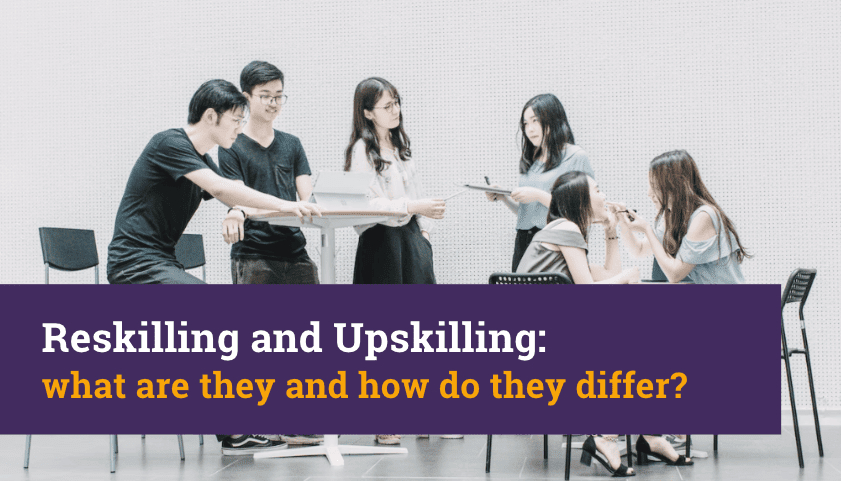There is no doubt that we are in the midst of the digital revolution and that, since its arrival, it has been advancing at such a dizzying speed that the labor market has not been able to keep up with it. As a result, companies are experiencing a situation in which their existing talent is not sufficient to fill new positions, whose technological requirements are often much higher than the skills of current workers. Given this situation, it is expected that, in the coming years, more than 50% of current employees will need Reskilling and Upskilling in order to keep their jobs.

It is a context in which companies have been forced to change a myriad of corporate aspects to adapt to new trends, from which employees and candidates have not been able to escape either. With the demands of today’s labor market, the latter must be in a continuous learning process if they do not want to be left behind (or directly out).
In the current labor environment, the situation for companies when it comes to filling IT talent is even desperate. There are many vacancies and unfilled technology needs, precisely because the market knowledge is less than the need. In addition, it has been detected that up to 60% of IT talent are passive candidates, i.e. they are not looking for a job. For this reason, at TalentFY we have specialized in the search for IT candidates, to find talent capable of filling very specific positions and needs in less than 10 days.
What are the differences between Reskilling and Upskilling?
- Reskilling: Training the employee with new skills and competencies that will be necessary to fill a new position within the company.
- Upskilling: Training employees with new skills and competencies to increase their productivity and performance in their current job in the company.

Advantages of Reskilling and Upskilling
Being aware of the relevance of Reskilling and Upskilling is a very important step in the fight “against” the vertiginous advance of digitalization and technology. If you want to stay on top, you have to update yourself and, therefore, your employees. This involves both the use of these two concepts, as well as updating your workforce with new IT talent. For this purpose, it is highly recommended to use solutions such as TalentFY.
Correctly implementing these actions will bring certain advantages and benefits for both the team and the company. Reskilling and Upskilling are two concepts that will always be bidirectional in terms of benefits.
- Combat the current IT talent shortage by training and upgrading employees to make them more competitive.
- It avoids new selection processes, which saves time and money in the search for talent and training of new recruits.
- Increased loyalty and retention of talent, as they feel valued and even indebted to the company that invests in their training.
- Promotes adaptation to change with training in new technologies and skills.
- Development and updating of staff knowledge
- Improve Employer Branding and turn employees into brand ambassadors.
Have you ever participated in a Reskilling and Upskilling process? Do you think it is necessary to implement it in all companies? Leave your opinions in the comments!
Try TalentFY in a Live Demo
Try our recruiting platform without compromise.
And if it doesn’t work for you, YOU DON’T PAY No small print.
Join our News
Subscribe and receive our most exclusive content and news every month
directly in your inbox.






